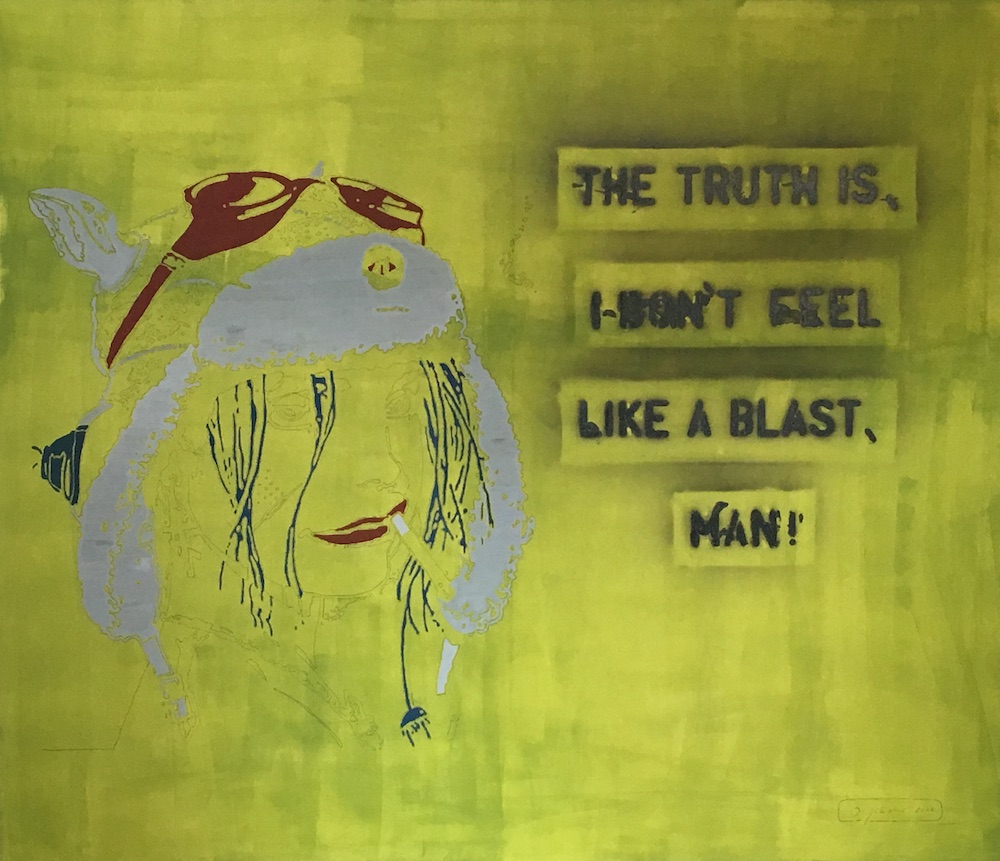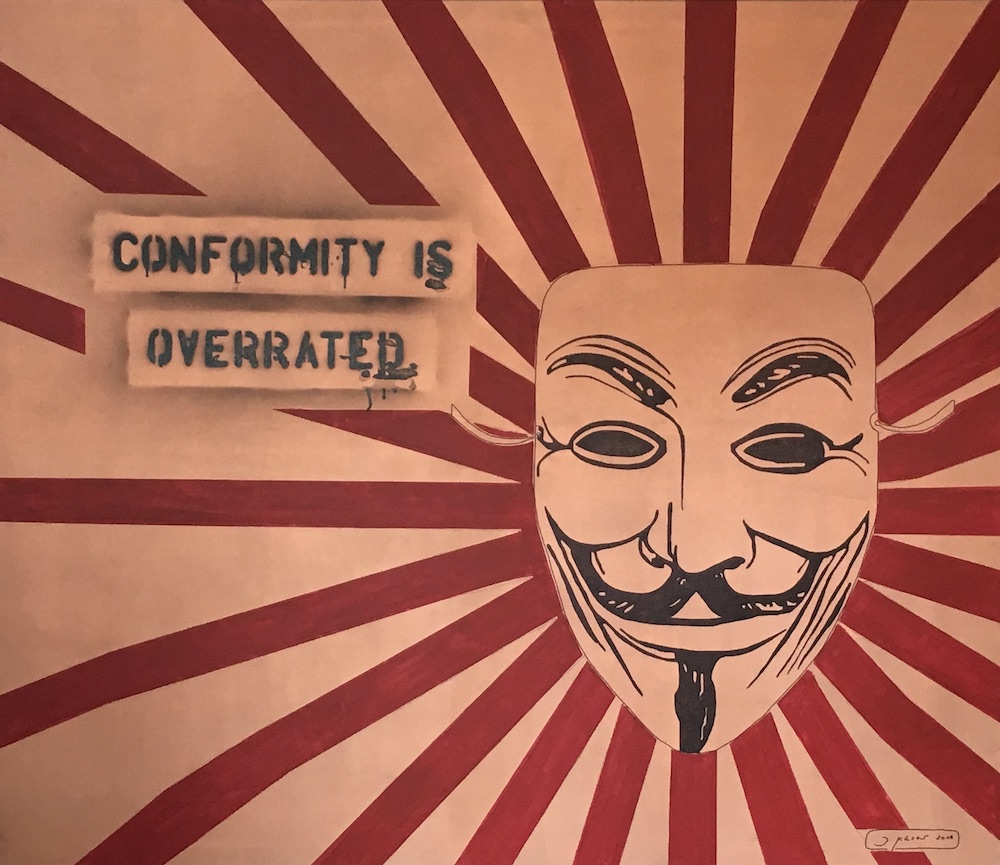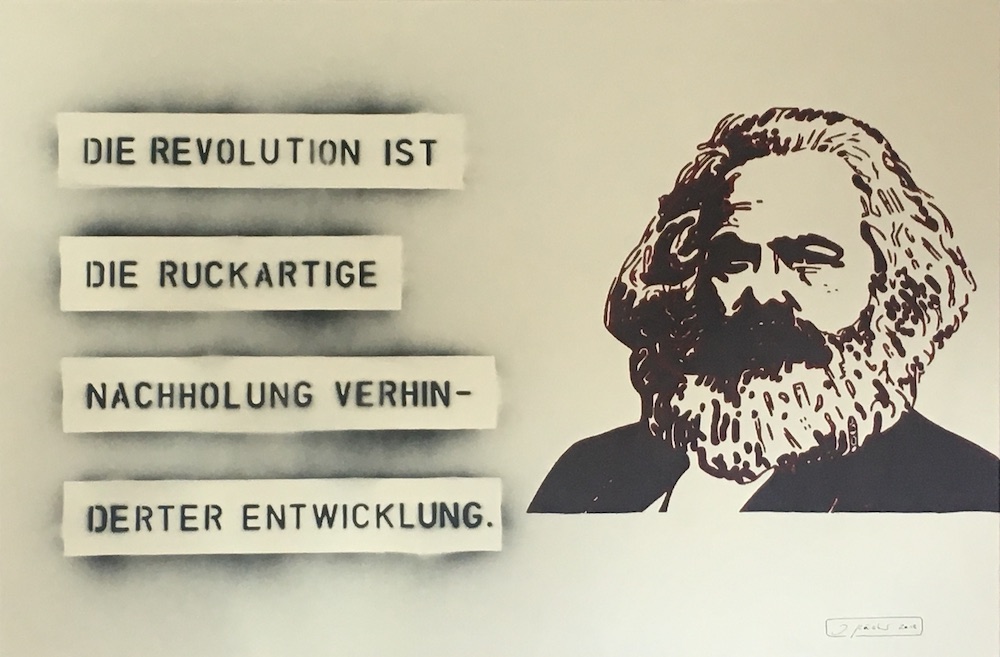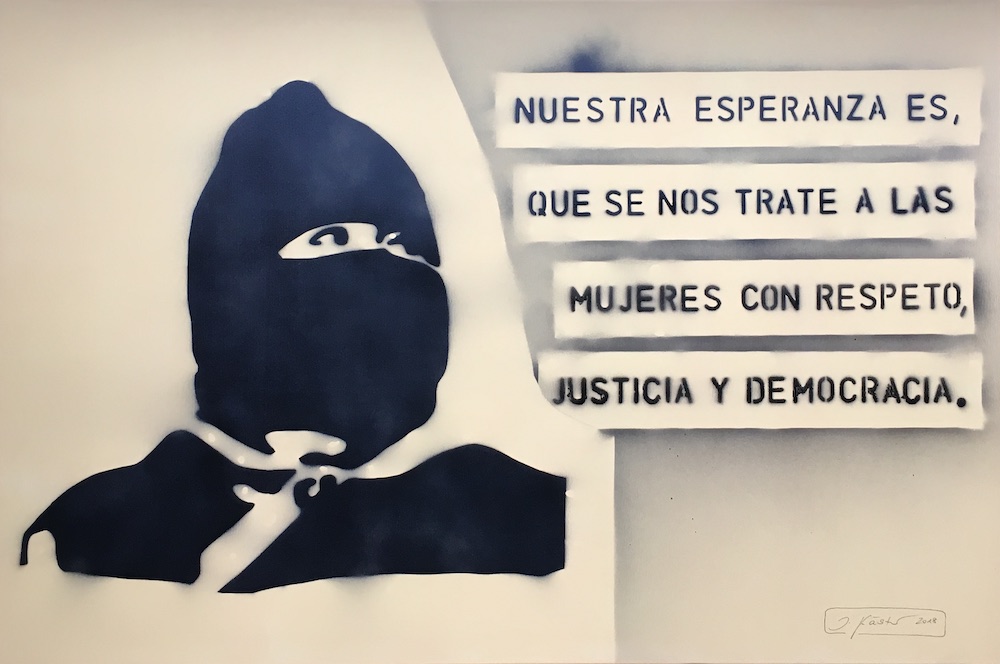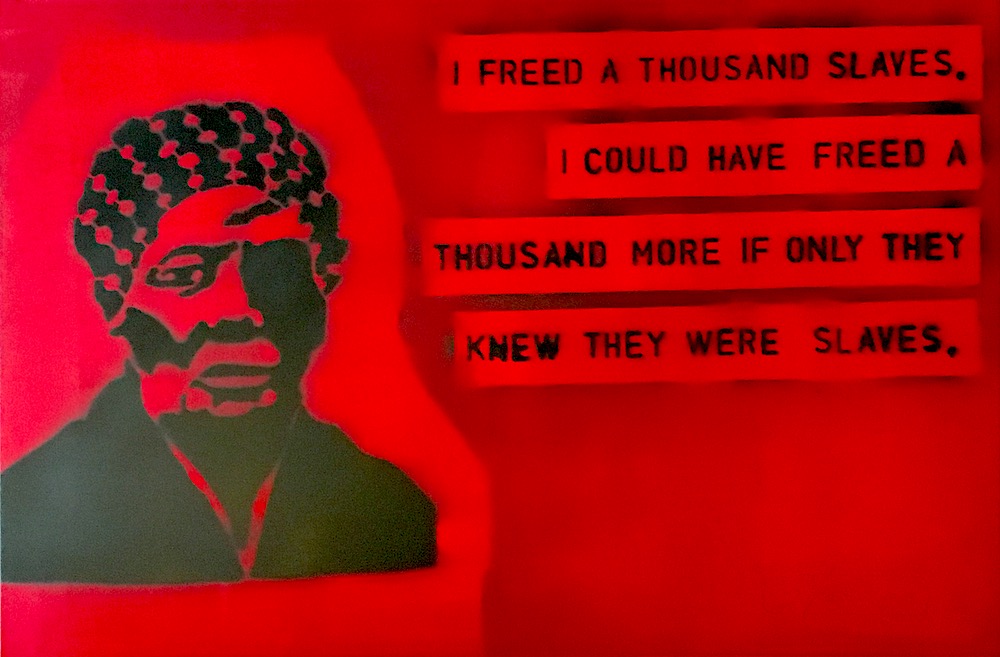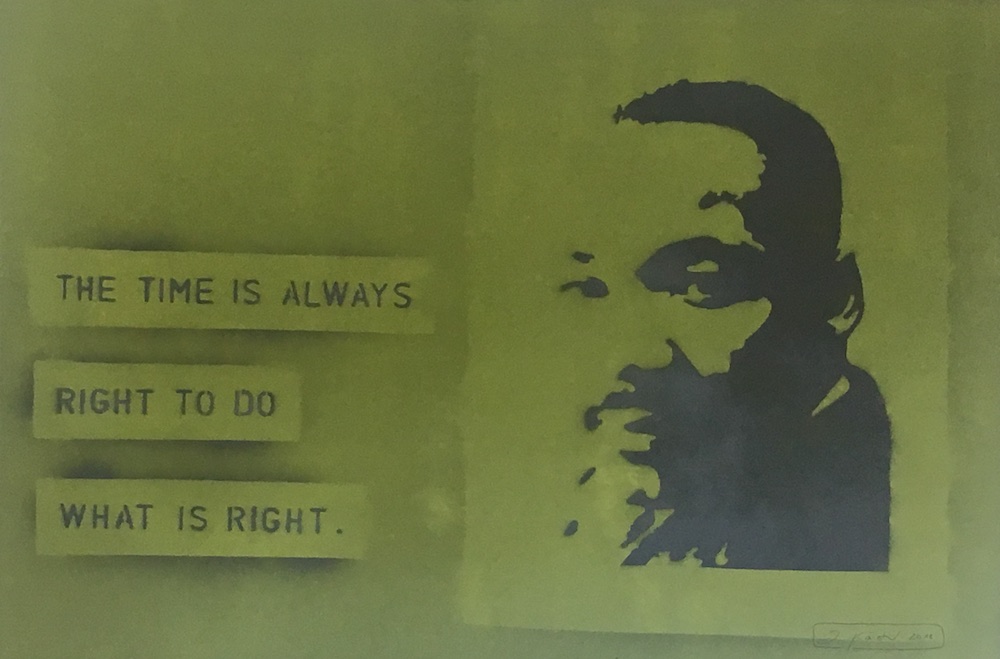Story of the Work
(1988 – )
Her name speaks for itself: Tank Girl is a young woman living in a tank. She is thoroughly an anarchist and heroine of the eponymous British comic series by Alan Martin and Jamie Hewlett.
Australia in 2033 is a desert landscape destroyed by meteorites. Tank Girl was a tank driver and bounty hunter until she shot a highly decorated officer whom she considered her father. As her delivery of stoma bags to President Hogan, the incontinent head of state of Australia, fails, a most embarrassing situation for him at an international trade conference is the result. Thereupon, she was outlawed and a multi-million dollar bounty was placed on her.
Tank Girl is living with the kangaroo man Booga, who is the result of a military research project to create the perfect soldier. She tends to arbitrary acts of sex and violence, to hair coloring, picking her nose, vomiting, spitting, and occasional drunkenness. Tank Girl prefers a beer after waking up and has almost always a cigarette in her mouth.
What really matters is her unrelenting unconventionality, that she is not afraid of anything or anyone, that she always remains true to herself, that she never questions herself, that she is crazy and creative, fun-loving and humorous, following only her own rules and always having the last word.
Source: Wikipedia, Comics Tank Girl (February 2019)
Tank Girl
2018
Acrylic and acrylic varnish on canvas
140 x 120 x 4 cm
SOLD
Story of the Work
(V for Vendetta)
… The gunpowder treason and plot; I know of no reason why the gunpowder treason should ever be forgot! This is how the English verse begins, which is based on the failed assassination from Guy Fawkes and the Gunpowder plot on King James I. and the English Parliament in 1605.
The graphic novel V for Vendetta by Alan Moore and David Lloyd is based on the story of a fictitious England in 1997, which is occupied as a totalitarian police state by a fascist party after the third world war.
The protagonist V is an anarchist and terrorist disguised as Guy Fawkes, who lays the foundation for overthrowing the regime. “People should not be afraid of their government. The government should be afraid of its people.“ He blows up the British parliament building, setting in motion his plan, developed over many years: In order to liberate people from the yoke of the regime, it is necessary to destroy the current society. Then a new society can emerge from the ruins, using its freedom self-reliantly.
To support people in the new beginning, V has considered Evey as his successor. He himself is the destroyer and thus not only superfluous, but harmful to the society to be created. In a final act, he sacrifices himself in a “viking burial” and blows up 10 Downing Street as the last symbol of the old state. Evey slips into the Guy Fawkes mask and incites people to revolt.
The Guy Fawkes mask by V has been used by the international hacktivist group Anonymous as a distinctive mark and identity protection. Since the end of 2011, the mask also gained popularity in the context of the Occupy Wall Street movement or in anti-ACTA protests. The mask stands for the idea of protesting against tyranny and absolute conformity and of political resistance. Unlike V or Guy Fawkes, it can not be killed, imprisoned or banned.
Source: Wikipedia, graphic novel V for Vendetta (February 2019)
Remember Remember the 5th of November
2018
Acrylic and acrylic varnish on canvas
140 x 120 x 4 cm
Story of the Work
(1818 – 1883)
Marx considers the proletariat, the class of the society that produces its goods, the driving force of the reconstruction of society. It is the only one that possesses the power to successfully accomplish a revolution. Moreover, the proletariat is the class with the greatest interest in a revolution, since it is structurally and practically oppressed, exploited and estranged by the conditions of capitalism. The last paragraph of the programmatic manifesto of the Communist Party of 1848 reads: “The Communists disdain to conceal their views and aims. They openly declare that their ends can be attained only by the forcible overthrow of all existing social conditions. Let the ruling classes tremble at a Communist revolution. The proletarians have nothing to lose but their chains. They have a world to win.“
In November 2018, 300,000 people in France protest against planned additional fuel taxes. The yellow vests movement gets started. The members of the movement demand an increase of the minimum wage and the pensions, the reintroduction of the wealth tax abrogated in the previous year, and a direct democracy.
Emmanuel Macron says in a TV speech on 10th December 2018: “… It seems that the socially deprived have been forgotten and ignored. The government will now ensure that all French people can subsist on their work gracefully.”
Meanwhile, the government responded to certain demands of the yellow vests. It abrogated the tax increase on fuel, introduced tax reductions for pensioners and an increase in the minimum wage. The protests continue.
“Revolution is suddenly catching up on averted development.” In Belgium, yellow vests are protesting against excessive fuel prices and declining purchasing power, in Italy against the ailing highway company ASPI, in Portugal against corruption, in Ireland against the state of the housing market, in Taiwan for lower taxes, in Israel against price increases on electricity, water and food.
Source: Wikipedia and international press (February 2019)
Karl Marx
2018
Acrylic and acrylic varnish on canvas
120 x 80 x 4 cm
Story of the Work
(1959 – 2006)
Comandante Ramona was born in a Tzotzil – a community in the highlands of Chiapas in southern Mexico. Ramona earned her scarce livelihood by selling embroidery to tourists in San Cristobal de las Casas. She was politicized by the insight that the bitter poverty that people lived in – over 60 percent of people suffered from malnutrition while being forced to grow cash crops for export on their fertile soil – was not to overcome without fight.
Ramona joined the Army of National Liberation (EZLN), learned Spanish and tried to politically wake up the women of Chiapas. On 1st January 1994, the Zapatistas poured out from their bases in the Lacandon jungle and took over all the major cities in Chiapas. Ramona was one of the leaders. The rulers brutally struck back, but the Zapatistas still maintain their fight for autonomous administration of their lands confiscated by the state.
Ramona was one of seven female commanders. Women make up about a third of the Zapatista army and are responsible for most of the background work, such as cooking, sewing, production of weapons, and mobilizing the base. Ramona was involved in the formulation of the “Revolutionary Women’s Law”, which is part of the “Revolutionary Laws” of the EZLN. The main points of the law say that women have the right to decide for themselves how many children they give birth to; to be fairly rewarded for their work; to take part in the revolutionary fight, as well as to hold political offices and military posts; access to the health system, to food and education; being able to choose one’s own partners and not being forced to marry; and that physical violence or rape will not be tolerated. Ramona worked with the women of indigenous communities to bring about change.
Her last public appearance was at a meeting on the “Other Campaign” aimed at building organized resistance across Mexico. At the end of her speech in Mexico City in 1996, “Ramona, Ramona, Ramona” shouts were heard in the Plaza de la Constitution.
Source: Revolutionäre Frauen: Biografien und Stencils . edition assemblage. 2011 (February 2019)
Commandante Ramona
2018
Acrylic and acrylic varnish on canvas
120 x 80 x 4 cm
PERMANENT LOAN
Story of the Work
(ca. 1820 – 1913)
Born into slavery in Maryland, she was sold at age five as a house servant, repeatedly beaten, and later sold as a field worker. In her teens, her head was knocked so severely when she was blocking her owners from attacking another slave that it was permanently dented, and she suffered from narcolepsy for the rest of her life.
In 1849 she escaped to the north. She reached “free” Philadelphia and met William Still who was a conductor on the Underground Railroad, an elaborate and secret series of houses, tunnels, and roads set up by abolitionists and former slaves. Harriet soon became involved in the Railroad, making nineteen trips to the south to guide groups of slaves to the north, and freedom. Nicknamed “Moses”, she was always armed and threatened any escapee who showed frailty on the arduous trip north: “Dead niggers tell no tales.” She became famous among slaves and infamous among slaveowners.
The Fugitive Slave Act of 1850 permitted the recapture of escaped slaves in the north for auction in the south. Bounties for Harried totaled $40,000, but she never lost a single “passenger”. She often used tricks and disguises to slip right under enemy noses.
She worked in the North during nine months of each year to fund these excursions. She helped found schools, even though she herself was illiterate; encouraged communal fostering of poor children; and worked to build a new African communalist culture in the North.
The Civil War broke out in 1891, when Harriet was in her forties. She lent her expertise to the Union Army as a spy and nurse.
After the war, she continued her involvement in social issues, including women’s rights. In 1908, she established a home in Auburn, New York for elderly and indigent Blacks that later became known as the Harriet Tubman Home. She died aged approximately ninety-tree.
Source: Revolutionary Women: A Book of Stencils”. Queen of the Neighbourhood Collective. PM Press (February 2019)
Harriet Tubman – Wade in the Water
2018
Acrylic and acrylic varnish on canvas
120 x 80 x 4 cm
PERMANENT LOAN
Story of the Work
(1929 – 1968)
“The time is always right to do what is right,” Martin Luther King said in his speech “The future of integration” at Oberlin College in 1964, shortly after being awarded the Nobel Peace Prize.
King often has been accused of not choosing the right time – for his speeches, his sit-ins or marches – or stubbornly sticking to his non-violent path. But precisely because of his actions and beliefs, he is considered one of the most prominent figures in the non-violent struggle against oppression and social injustice. Due to its dedication and effective force, the Civil Rights Movement has become a mass movement that has finally achieved the legal abrogation of racial segregation and the creation of the unrestricted right to vote for the black population of the US Southern states.
In current affairs, this famous quote by Martin Luther King is recalled. Tom Carper, Senator of Delaware: “Each year on Martin Luther King, Jr. Day, many of us get a little extra time to spend with friends and family. But this day has purpose and meaning that go far deeper, as we reflect on the words and works of a truly great man who sought unity through compassion, respect, and above all else, the Golden Rule.
Dr. King once said, “the time is always right to do what is right.” As we’ve seen over the past year, in Congress and around the country, time and again we have let our differences keep us from doing what is right. To lose sight of our shared values and goals, and to get bogged down in political fights, is a disservice to every American we represent, and the generations of Americans who will inherit the country that we continue to build.
Today, a day honoring a man who worked tirelessly to bring all Americans together, is the perfect occasion to rededicate ourselves to focusing on the things that bring us together, rather than those which drive us apart.”
Source: Wikipedia, oberlin.edu, carper.sentate.gov in January 2018 (February 2019)
Martin Luther King
2018
Acrylic and acrylic varnish on canvas
120 x 80 x 4 cm
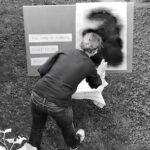

What can I do for you?
Would you like to visit me in my studio or to be informed about exhibitions in your area? Are you interested in a collaboration?
In any case, I am looking forward to reading from you.
Alte Landstrasse 289 . 8708 Maennedorf . Switzerland
Ch. de Plessis-Nogent . 97115 Sainte-Rose . Guadeloupe
